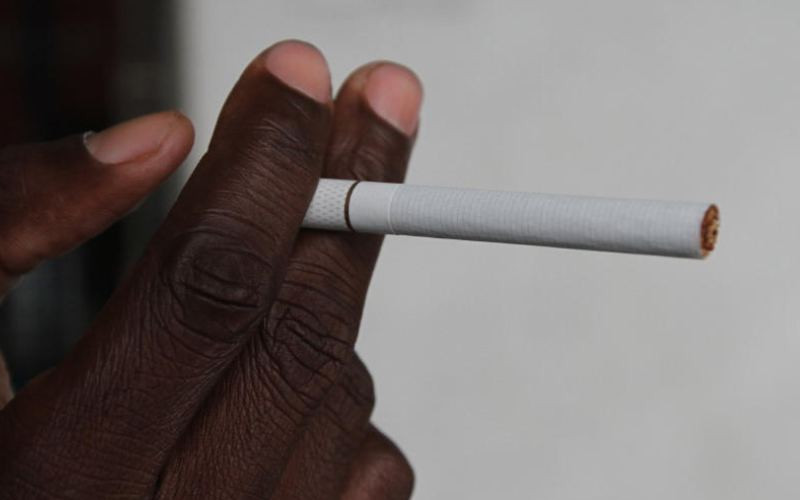
A man displays a Cigarrete stick. [Elvis Ogina, Standard]
As many as one in four tobacco farmers are affected by green tobacco illness, the United Nations has warned.
A new report titled Grow Food, not Tobacco was published ahead of World No Tobacco Day, marked on May 31, 2023, and states that tobacco farming is exceptionally labour-intensive and exposes farmers and their families to severe health risks.
According to the report released on May 26, 2023, Green tobacco illness is a disease caused by nicotine absorbed through the skin when handling tobacco leaves, which is then distributed throughout the body.
Many tobacco farmers are not aware of, or cannot afford, appropriate protective equipment to prevent the disease, such as water-resistant clothing, chemical-resistant gloves or rain suits with boots. The disease is particularly prevalent among younger Asian and South American tobacco farmers owing to higher nicotine sensitivity, in addition to humid conditions which increase absorption through the skin.
"Tobacco farmers are exposed daily to tobacco dust and chemical pesticides. A tobacco farmer who plants, cultivates and harvests tobacco may absorb nicotine equivalent to 50 cigarettes per day," the report reads.
Additionally, tobacco farmers often carry harmful substances home on their bodies, clothes or shoes, leading to harmful secondary exposure for their families.
"Tobacco farmers also inhale large amounts of tobacco smoke during the curing process, which increases the risk of chronic lung conditions and other health issues," the report says.
Women and children are often the primary tobacco farm labourers and are therefore more exposed to the health risks of handling green tobacco leaves and heavy given their body weight relative to the proportion of nicotine absorbed through their skin.
Despite a global trend of decreasing tobacco consumption from 2000 -2020 and an overall worldwide decline in tobacco leaf production during the same time period, tobacco remains a popular cash-crop choice for many farmers, especially in low- and middle-income countries (LMICs) where the vast majority of tobacco farming takes place.
The global fall in tobacco leaf production has been accompanied by a production shift from Europe and other high-income countries, towards lower-income countries like Malawi, Kenya, Uganda and Zambia.